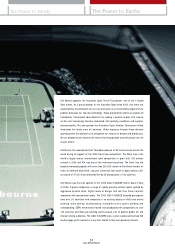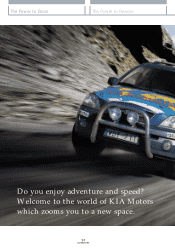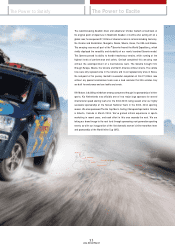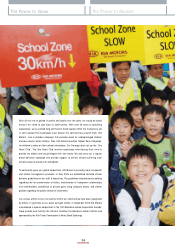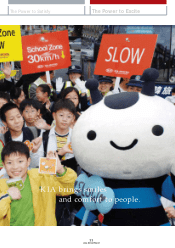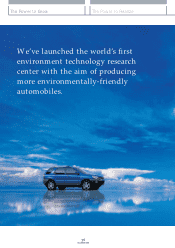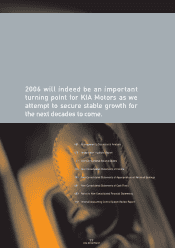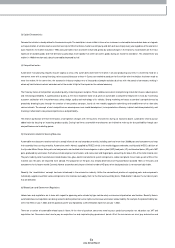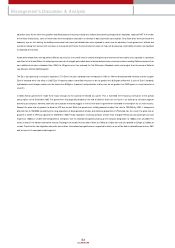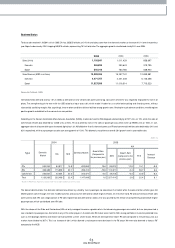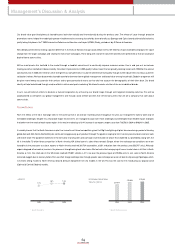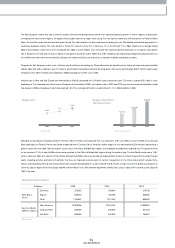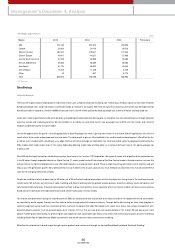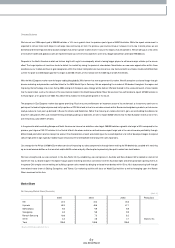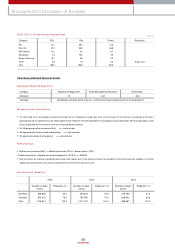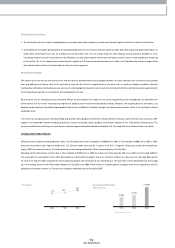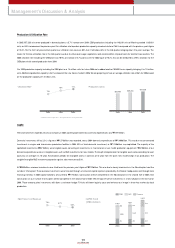Kia 2005 Annual Report Download - page 61
Download and view the complete annual report
Please find page 61 of the 2005 Kia annual report below. You can navigate through the pages in the report by either clicking on the pages listed below, or by using the keyword search tool below to find specific information within the annual report.
61
2005 Annual Report
(3) Cyclical Characteristics
Demand for vehicles is closely related to the economic cycle. The correlation is more visible in times when increases in autom obile demand slow dow n or stagnate
as the penetration of vehicles reaches a certain level. Up to 1994, the Korean market w as still young and dem and rose sharply every year regardless of the econom ic
cycle. However, the market m atured in 1995, and autom akers have since been influenced greatly by cyclical changes in the econom y. Autom obiles are the most
expensive of durable goods and their dem and usually drops m ore rapidly than other consum er goods during an econom ic slow dow n. This characteristic w as
evident in 1998 when dom estic sales of autom obile decreased by half.
(4) Com petition factors
Autom otive manufacturing requires m assive capital, so only a few autom akers dominate the market in all auto-producing countries. It is extrem ely hard for a
new com er, even with a strong financing, to be successful because at least 4~5 years are needed to produce the first vehicle after the decision has been m ade to
enter the market. At the sam e tim e, the autom otive industry employs tens of thousands of people and does business w ith thousands of contractors, making it
extrem ely hard to force insolvent carmakers out of the market in light of the im pact on the national econom y.
The three key factors of com petition are product quality, marketing pow er and price. These variables are crucial in strengthening market dom inance, reducing costs
and enhancing profitability. A superb product quality, as the m ost im portant factor of all, gives an autom aker a com petitive edge over its rivals by maxim izing
custom er satisfaction w ith the perform ance, safety, design, quality and technology of its vehicles. Strong marketing enhances a carm aker’s com petitiveness by
proactively drawing buyers through the creation of new product concepts, launch of new models, aggressive advertising, and establishm ent of an after-sales
service netw ork. The concept of cost com petitiveness encom passes new model developm ent, m ass production efficiency, indirect w orkforce productivity and
financing; it affects both sales price com petitiveness and profitability.
The relative significance of these three factors of competition changes with the business environm ent. During an econom ic boom , autom akers tend to pursue
added value by focusing on im proving product quality. During hard times, autom obile m anufacturers are inclined to make up for lost profitability through cost
competitiveness and m arketing power.
(5) Characteristics related to Securing Resources
Autom obile manufacturers need to maintain a steady inflow of raw and secondary materials, including steel and more than 20,000 parts and com ponents to keep
their assem bly lines running sm oothly. Autom otive steel in Korea is supplied by POSCO, which is the world’s biggest steelm aker, and Hyundai HYSCO, a division of
the Hyundai Motor Group. Auto parts and com ponents are classified into three categories: made in plant (MIP), local parts (LP), and knocked dow n (KD) parts. MIP
parts, produced by autom akers them selves, include engines, transm issions, and various cast and forged parts, accounting for about 45% of the total material cost.
The parts m ade by local manufacturers include brakes, tires, glass, electric and electronic system com ponents, rubber and plastic; these m ake up som e 55% of the
material cost. KD parts are im ported from abroad. The proportion of KD parts has steadily declined since Hyundai Motor localized 100% of the parts and
components for its Accent m odel. Currently, Korean autom akers only im port a lim ited num ber of KD parts when local production is not econom ically viable.
Recently, the “modulization” concept has been introduced in the autom otive industry. Unlike the conventional practice of supplying parts and com ponents
individually, suppliers assem ble various com ponents into modules and supply them to the final auto assem bly plants. “Modulization” reduces the num ber of parts
that are delivered.
(6) Related Law s and Governm ent Regulations
Various laws and regulations are in force with regard to approving auto vehicles by type, vehicle safety, environm ental protection, and taxation. Recently, Korea’s
autom obile laws and regulations are being revised to better protect consum er rights and increase autom akers’ accountability. For example, the product liability law
went into effect on July 1, 2002, and the approval system was replaced by a self-certification regime on January 1, 2003.
There are a num ber of autom obile-related taxes in Korea. At the tim e of purchase, consum ers need to pay a special consum ption tax, education tax, VAT and
registration tax. Consum ers also have to pay an acquisition tax and require buying governm ent bonds. All of the car ow ners are must pay autom otive and


